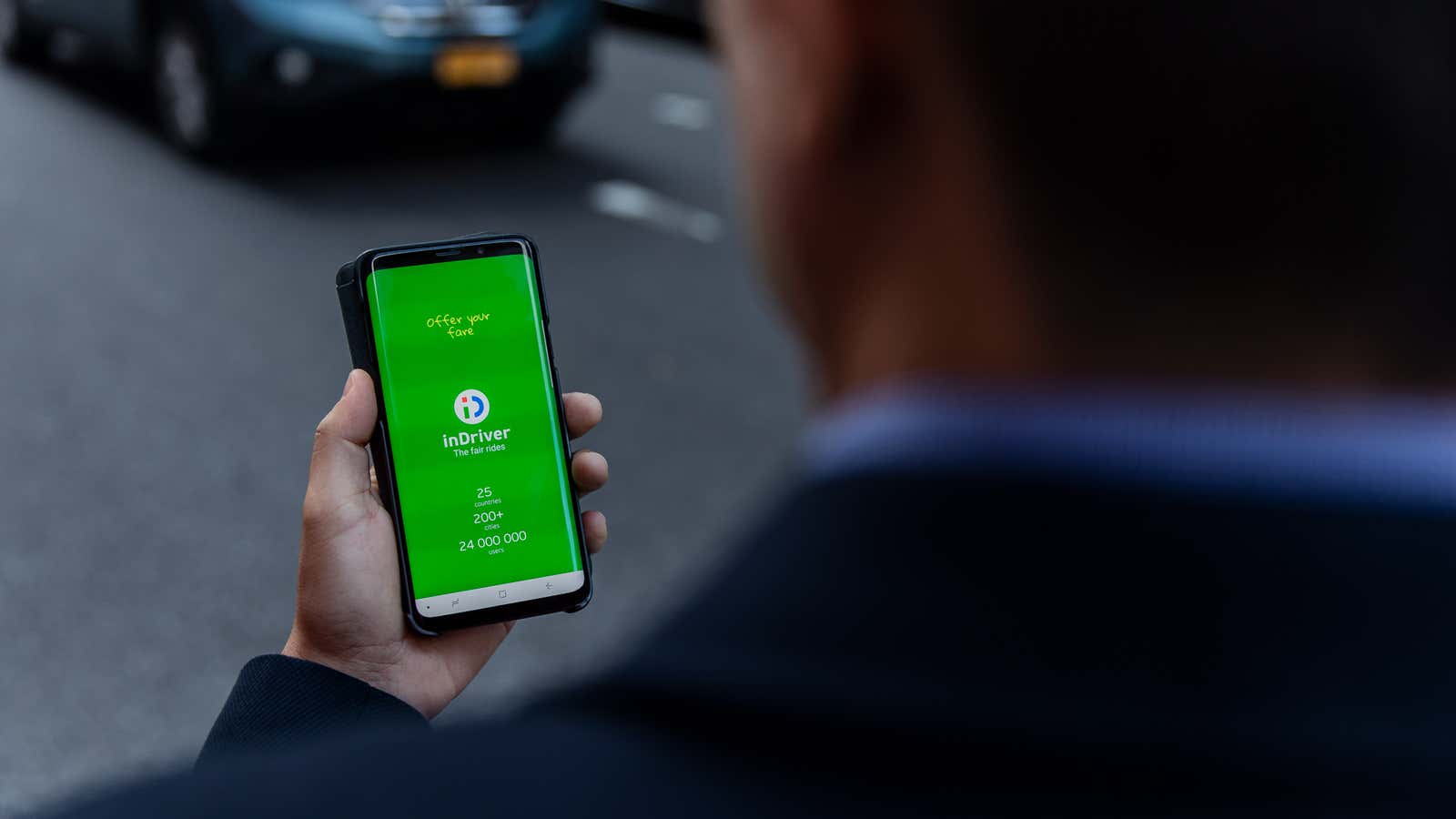It’s hard to look beyond Uber and Bolt (formerly Taxify) when discussing ride-hailing in Africa—and there’s good reason.
Both companies are multibillion-dollar behemoths and are competing aggressively with each other and other rivals in over 20 cities on the continent, for both car and motor-cycle hailing market share.
But over the past seven months, inDriver, a five-year old Russia-founded, US-based ride-hailing company, has gone from launching in its first African city to operating in four. Since launching in Arusha, Tanzania last November, inDriver has expanded to Nairobi, Johannesburg and Cape Town. The company says it aims to enter cities in Nigeria, Kenya, Ghana, Zimbabwe, Uganda and Namibia next.
Unlike the established model for ride-hailing startups which typically includes estimated fares and automatic pairing between drivers and riders, inDriver is differentiating itself with the element of increased choice. It allows riders propose fares for their trips (based on pre-approved rates) after which nearby drivers who receive notice of the ride request can accept the rate or respond with counter-offers. A prospective rider then picks a preferred driver based on their agreed fare or driver rating.
With the option of having choices central to its model, inDriver is also aiming to rapidly boost its driver supply with several incentives. When it first launched in Tanzania, its pitch to drivers was an initial six-month period without charging commissions after which it estimated to charge the drivers just 5% to 8% in commissions. It’s a rate that’s much lower than either Uber (around 25%) or Bolt (around 15%). Agreeing on a pre-determined fare also means drivers can view destinations—a factor that riders often find to be important to drivers.
The competition to attract drivers is already an established core of the ride-hailing model given the lack of exclusivity. As drivers can sign up for competing platforms, they are more likely to work longer with—and grow revenue for—ride-hailing companies that offer the best incentives, as Uber and its growing raft of rivals have already experienced.
But the seemingly never-ending competition for drivers also comes with a caveat as winning their loyalty solely through incentives will likely require long-term subsidizing for customer rides with promotions to boost drivers’ earnings at the cost of the company’s profits. As Uber’s filing documents before its blockbuster IPO showed, the company’s biggest expense amid huge losses globally is its “cost of revenue,” a category that includes incentives paid to drivers.
The story has been updated to reflect the fact that even though the company was founded in Russia, it has been US-based since 2018.
Sign up to the Quartz Africa Weekly Brief here for news and analysis on African business, tech and innovation in your inbox
